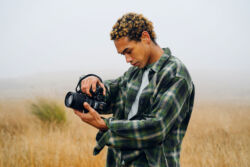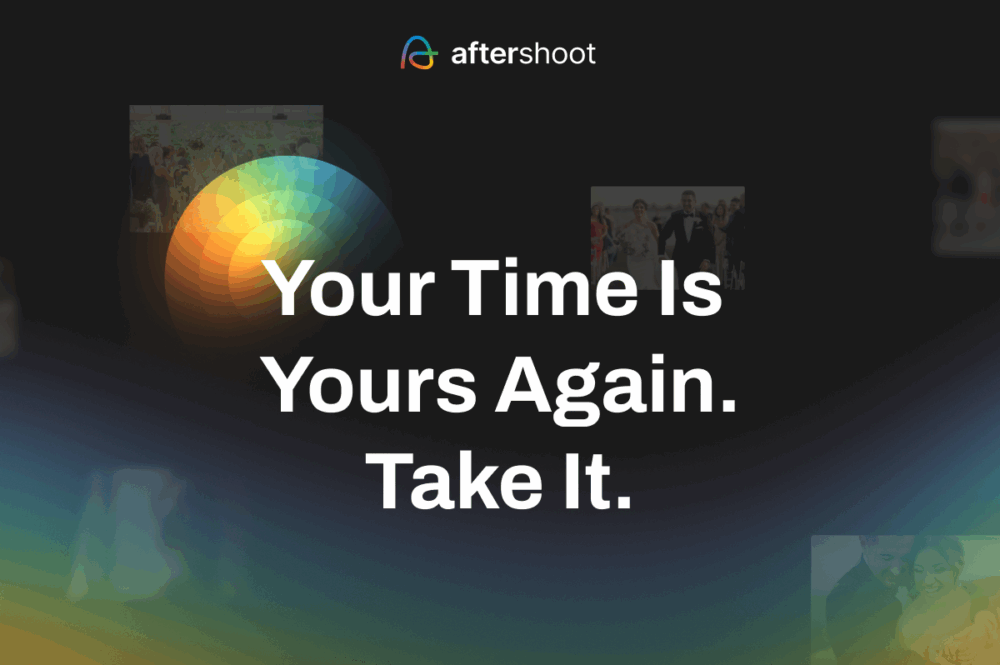One of the first things you must learn as a new photographer is the relationship between ISO, aperture and shutter speed. Known as the “exposure triangle,” this is the basis of the photography world, as addition and subtraction are in the math realm.
Trying to wrap my mind around the relationship between these three concepts when I was just starting out was rough. I had pages and pages of notes taken from Bryan Petersen’s Understanding Exposure. I was drowning in diagrams and photos that I took at different ISO/shutter speed/aperture combinations. One day, the light bulb finally clicked and I was on my way. (Note: Check out our friends at photzy for more free photography cheat sheets).
This handy chart below would have saved me much time and tears if it were available eight years ago. Daniel Peter of Fotoblog Hamburg has created this free downloadable cheat sheet card for beginner photographers in easy to understand diagrams. The card is meant to show you a basic overview of aperture, ISO and shutter speed, but doesn’t go into much detail of what it all means. And it isn’t meant to. It is formatted for printing on a business card sized piece of paper to easily fit in your pocket when out practicing these concepts.

If you would rather learn via video or want to learn more, make sure you check out the SLR Lounge Photography 101 Workshop, where we show you how to create awesome images with basic gear, teach you how to move from the auto modes to manual mode and more on that tricky exposure triangle. Below is a sample of what you’ll learn from Photography 101.
Watch Understanding Exposure With The Exposure Triangle
Watch the video below to see how Pye explains the exposure triangle. This is an except directly from the Photography 101 Workshop.
Expanded Explanation of the Exposure Triangle
Shutter Speed – Shutter speeds are expressed as fractions of a second, so 1/50 is a longer period of time than 1/200. However, when people say “higher shutter speeds,” they’re referring to the faster shutter speed, not mathematically higher numbers. So even though 1/50 is greater than 1/200, the “higher” shutter would be 1/200.
Aperture – Like shutter speeds, aperture is also stated in fractions, so it’s important to know that the smaller the number the bigger the opening. Therefore, an f/1.4 is a very large opening while f/22 is a very small opening.
In its most basic sense, you can think of exposure as a bucket with an adjustable hole that opens and closes at the top and a continuous stream of water pouring into the bucket. The smaller the hole at the top, the longer the hole would need to be open in order to fill the bucket with water. Conversely, the larger the hole, the shorter amount of time the hole would need to be open in order to fill the bucket.
So in this analogy, the hole in the bucket is the aperture, the amount of time the hole is open is the shutter speed, the water pouring in is light, and a full bucket of water is a properly exposed image. If there is not much water (light), the hole (aperture) would need to be open wide; and/or the duration of the opening (shutter speed) would need to be longer in order to fill the bucket (properly expose the image). If there is a lot of light (water), the aperture (hole) would not need to be open as wide; and/or the shutter speed (the duration of the opening) could be shorter to properly expose the image (fill the bucket).
To simplify and summarize, a lot of light = faster shutter speeds/higher (smaller) apertures, while a little light = slower shutter speeds/lower (larger) apertures.
A full stop means you either double, or half the amount of light in the exposure. So if the hole (aperture) stays constant, going from 1/100 to 1/50 shutter speed is a full stop increase since it would double the light exposure by doubling the amount of time the water (light) fills the bucket. Likewise, if the duration (shutter speed) remained constant, going from f/2.8 to f/2 aperture is a full stop increase in light as it doubles the amount of water (light) filling the bucket by doubling the size of the hole (aperture).
Essentially, as you double the amount of light coming in with your shutter speed (by doubling the amount of time), you need to half the amount of light you let in with your aperture and vice versa. The doubling and halving is easy to see with shutter speed (as they are multiples of 2 or a number close to 2). However, aperture is a bit more complicated, as it involves the focal length and calculating the area of the hole. We’ll save this for another post or for you to search elsewhere, but the main concept is that the area of the hole doubles and halves with each of the f/stops (aperture settings) mentioned above.
Is this starting to make sense? If not, don’t worry it will with a bit of practice. It’s actually more important to know what aperture and shutter speed actually do to the composition of the picture. In general, slower shutters capture more blur, i.e. movement or streaks of light, while faster shutter speeds freeze motion. The speed necessary to freeze the motion depends on the speed of the movement of your subjects. If you would like to know what your minimum shutter speed to avoid hand shake, a good general rule to follow is the reciprocal rule (explained in our article on the reciprocal rule).
The lower the aperture, the shallower your depth of field. What does this mean? Well, if I’m at a low aperture (f/1.4, f/2.8, etc) and I focus on one person in a line of people extending towards and away from my camera, everyone before and after him will be blurry. In contrast, if I wanted more people in focus, I would chose a smaller (higher) aperture (f/8, f/11, etc). This is actually identical to the way our eyes work. Ever notice how you squint to try to see something more clearly? It should be mentioned that for overall sharpness, there are ideal apertures that vary for each lens (we’ll save this for another post or for you to research). Furthermore as you shrink your aperture (f/8, f/11, and up), you may start to run into diffraction (see our article on diffraction).
ISO – As if this wasn’t enough information to process already, there is a third factor called ISO (or film speed). Basically, the higher your ISO, the less light you need (allowing for faster shutter speeds and smaller apertures). You can think of ISO as an artificial way of creating more light, or for instance forcing the water (light) into the bucket by pressurizing it. There is a trade off though to using ISO to increase available light, higher ISO’s will yield grainier, less-than-tack-sharp images. The effect of this depends on your camera and its sensor quality. For example, we cap our ISOs at 800 (ideally 400 or under) on our Canon 40Ds and at 6400 (ideally under 3200) for our Canon 5D Mark IIs. Although you can get acceptable images above these figures, we prefer to limit the grain in our images and use our knowledge of light and flash to compensate.













